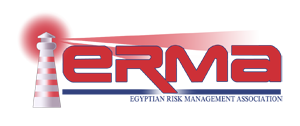Dubai – UAE
20th – 24th January , 2019
Objectives
By the end of this programme you will be able to:
Learn the principles of Warehouse and Materials Inventory Management .
Evaluate current procedures .
Examine operations and activities .
Analyze the key areas of operations .
Identify and Understand key performance indicators .
Succeed in improving operations .
Improve personal productivity .
Make needed changes to methods to improve customer service whilst achieving reductions in inventory .
Eliminate wasteful costs .
Avoid those internal problems that limit performance .
Obtain added value for money .
Understand and implement the essential tools for managing materials and inventory in the supply chain .
Participants
This program is for all individuals who have a stake in the Supply Chain and all Logistics, Materials, Inventory, Stock, Warehouse and Distribution Professionals
It will also help those who need to develop their limited understanding about Warehouse and Inventory management & planning .
It will be especially helpful to all those who are looking to make business gains and benefits and to any owners, operators and directors of companies with warehouse and stores operations and who hold stock and inventory .
Contents
Introduction and course overview.
The Role of the materials Warehouseing :
Why we need a warehouse,
What functions they cover,
How do they fit into the supply chain .
The balance between sorting and storing
12 initial questions to ask about warehousing activity .
Product Classification :
Supply /demand variables .
ABC Analysis or the 80/20 rule .
Determining product handling groups .
Throughputs and product formats .
Layout Options :
Receiving options .
Storage options .
Picking/assembly options .
Dispatching options .
Using the floor and the height space .
Organising for flow .
Methods and Equipment :
Warehouse structures .
Loading bays .
Selecting fork lift trucks .
Selecting racking .
Implications for warehouse layouts .
Operational timings and planning .
Health and Safety :
Duty of care .
Inspections and risk assessments-task analysis ..
Equipment maintenance and care .
Raising people’s awareness .
Productivity and Costs :
Fixed and variable cost .
Typical costs involved .
A model for understanding the roles of productivity, utilisation, and performance.
Setting productivity and cost targets .
The importance of having measurements and key indications of performance.
Materials Stock Coding :
Different methods .
Understanding of all involved .
Checklists to help on deciding the best option .
Materials Stock Recording :
Separation of powers .
Legal issues .
How do we get inaccuracies?
Materials Stock Checking :
Roles and responsibility .
Requirements .
Job Descriptions .
Authority levels .
Tolerances and approvals .
Reconciliations / discrepancies .
Inventory and the Supply Chain :
Inventory management definition .
Types of stock .
Demand amplifications .
Demand replenishment in networks .
Managing the flows .
Type I and II supply chains .
The Supply Chain Rules .
Inventory and statistics .
Concept of service level .
Inventory Key Concepts
Key Component: Demand Analysis .
Key Component: Demand Forecasting .
Key Component: Supply Lead Time .
Key Component: Cost & Benefits .
Inventory benefits .
Inventory polices .
Inventory in organizations .
Inventory Replenishment Methods and Systems :
Basic mechanics of inventory systems .
The stock time curve .
Stock components .
Stock investment .
Free stock .
Fixed order quantity systems .
Fixed order time cycle systems .
Requirements planning systems .
Materials Stock Control and Checking :
Inventory receipts .
Identifying inventory .
Surplus and obsolescent stock .
Stock control and records .
Stock checking programs .
Reviewing current procedures and polices .
Inventory Performance :
Inventory Assessment .
Assessing the stock level .
Models for implementing inventory control .
Determining stock targets .
Inventory questions .
Inventory KPI’s in warehouses/stores .
Inventory Strategies :
Push/pull .
Quick response (QR) .
Efficient consumer response (ECR) .
Collaborative planning forecasting and replenishment (CPFR) .
Lean and agile approaches .
Quality Management .
Postponement .
Cross Docking .
Consolidation .
Vendor Managed Inventory (VMI) .
Consignment stocking .
Co Managed Inventory (CMI) .
Direct product profitability (DPP) .
Economic value added (EVA) .
Collaborative supply chains .
Inventory Improvements :
Using the Supply Chain .
Using the Theory of Constraints .
Practical inventory improvements .
EDI and ICT .
Keys to reducing stock levels .
The 7 Rules for planning inventory .
Model for planning inventory .
Time : In the morning
Language : English & Arabic
Fees : 3950$
Daily schedule
| Lecture 1 |
| 9 : 11 Am |
| Rest 1 |
| 11 : 11.15 Am |
| Lecture 2 |
| 11.15 : 12.45 Pm |
| Rest 2 |
| 12.45 : 2 Pm |
| Lecture 3 |
| 2 : 3 Pm |


Leave A Comment